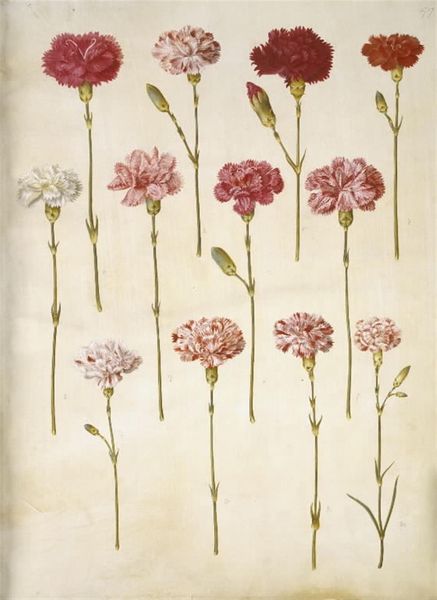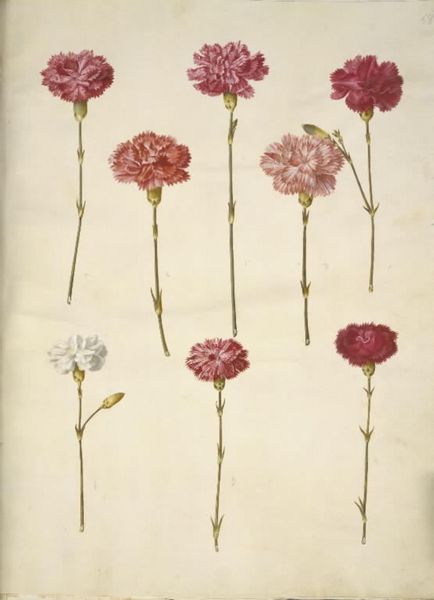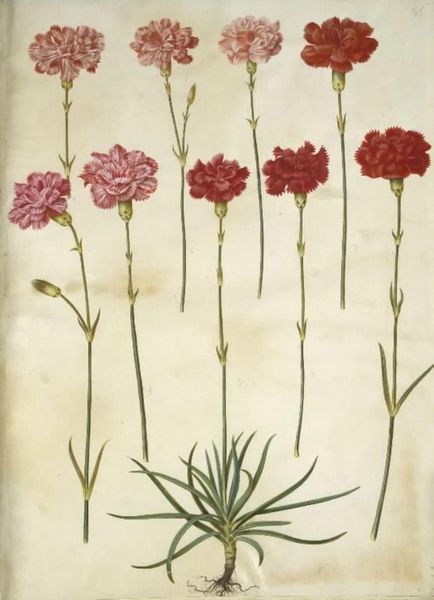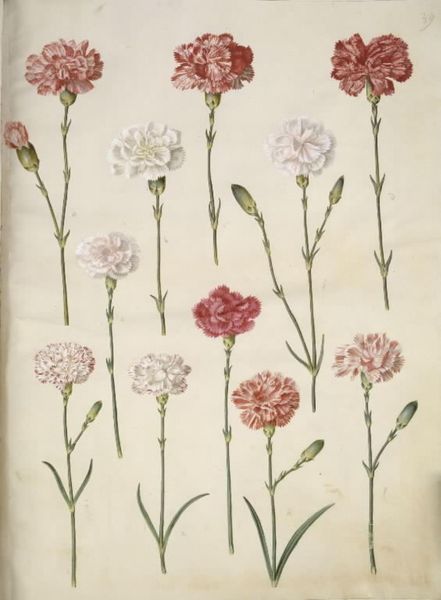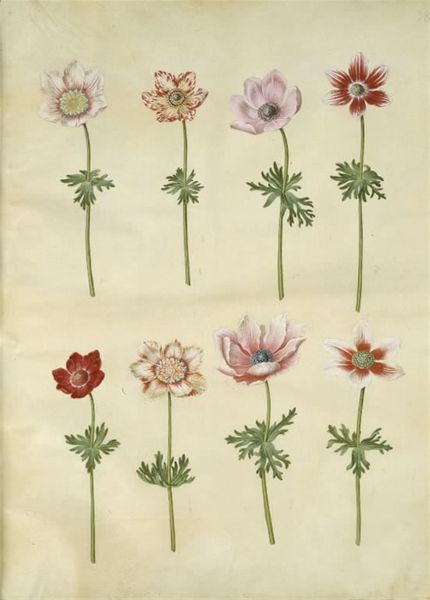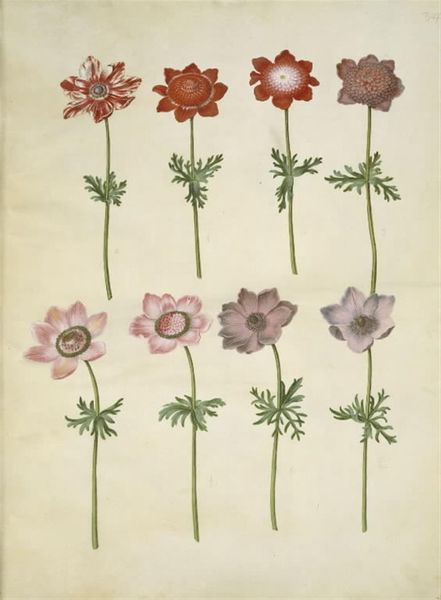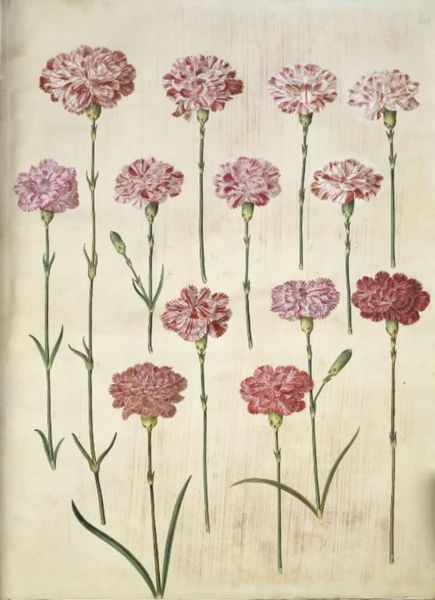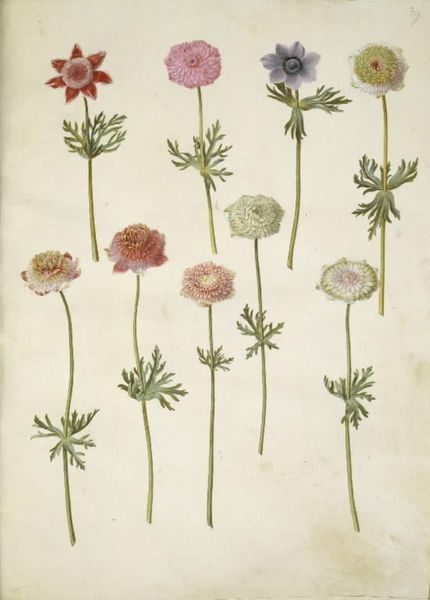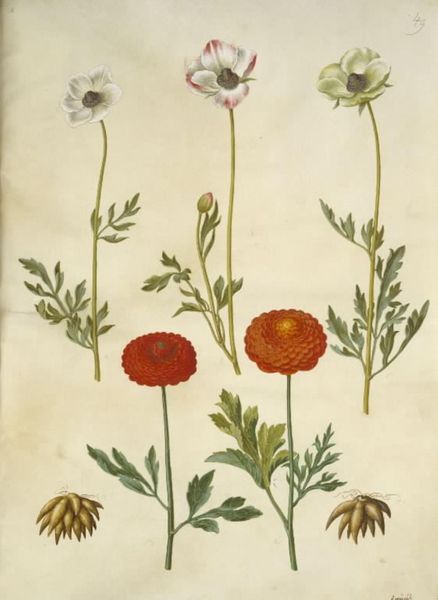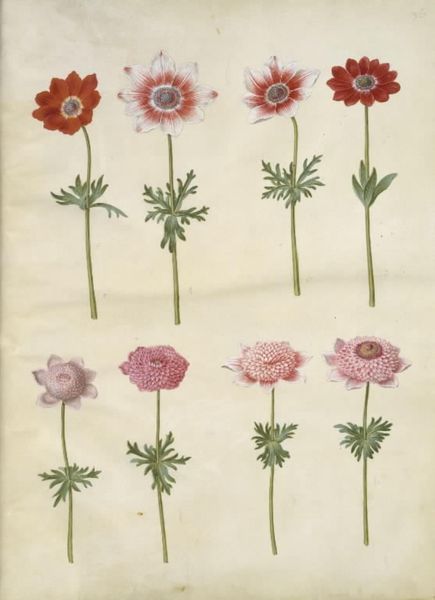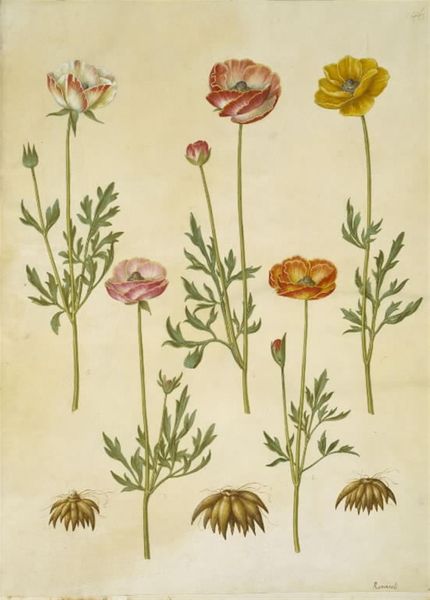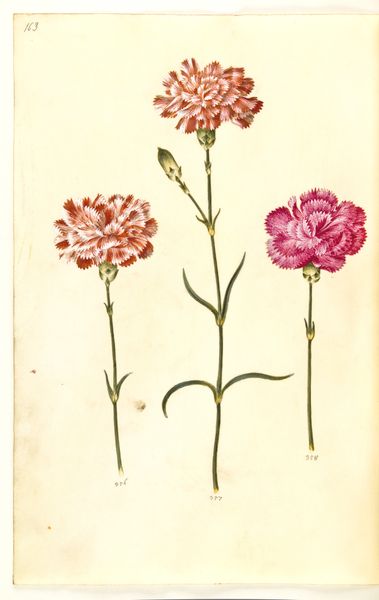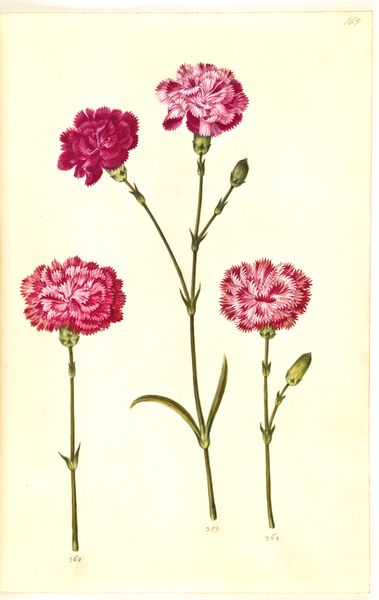
drawing, painting, gouache, watercolor
#
drawing
#
water colours
#
painting
#
gouache
#
11_renaissance
#
watercolor
#
coloured pencil
#
northern-renaissance
#
watercolor
Dimensions: 505 mm (height) x 385 mm (width) (bladmaal)
Curator: This is “Dianthus caryophyllus (have-nellike)” a work by Hans Simon Holtzbecker, created sometime between 1649 and 1659. You'll find it in the collection of the SMK - Statens Museum for Kunst. It’s primarily executed with watercolor and gouache, giving it a delicate yet vibrant quality. Editor: My immediate thought is just how meticulous it feels. All those carnations so carefully arranged, in slightly different shades, it almost reads as a study on color and form within very rigid parameters. Curator: Exactly! It speaks to the increasing scientific observation interwoven within the artistic practices of the Northern Renaissance. These types of detailed floral studies weren't just pretty pictures. They served a documentary purpose in understanding the natural world. Editor: Yes, but it also can't be divorced from the symbolic language flowers acquired at that time. Carnations, for instance, depending on their color, carried layers of meaning from love and marriage to remembrance or even mourning. Curator: Absolutely. Court culture particularly favored this kind of hidden language, infusing portraiture and decorative arts with a quiet visual vocabulary. This wasn’t necessarily subversive, but it did grant agency to interpretation outside explicitly mandated narratives. Who got to decode these floral symbols, and why? That social dimension is crucial. Editor: I agree, it underscores the exclusivity. Art like this wasn't intended for a mass audience, and the layers of symbolic meaning contribute to that sense of a knowing inner circle. Thinking about this as a museum object now, how do we bridge that historical gap? How do we open this delicate watercolor up to new meanings and audiences? Curator: I think we can prompt reflection on our own relationship to the natural world. Do we still carry that sense of wonder Holtzbecker clearly felt for this bloom, or have we sacrificed curiosity for extraction? Can the history embedded in these materials allow the object to embody a new social context of current environmental awareness? Editor: I like that. To consider something seemingly ornamental like this to think about our own relationship with the earth, or at least what values get codified in visual form. Thank you.
Comments
No comments
Be the first to comment and join the conversation on the ultimate creative platform.
